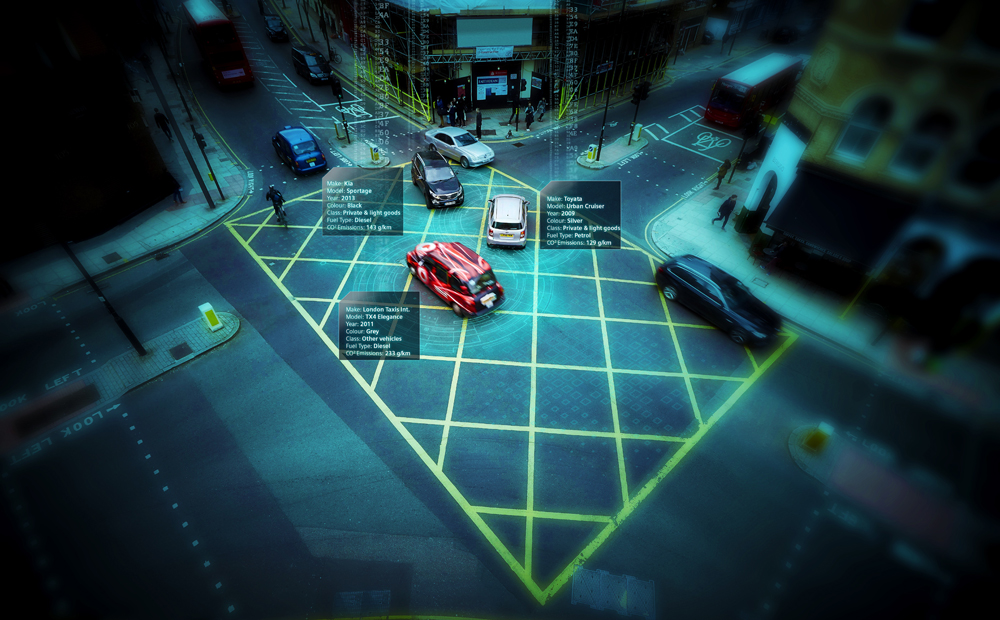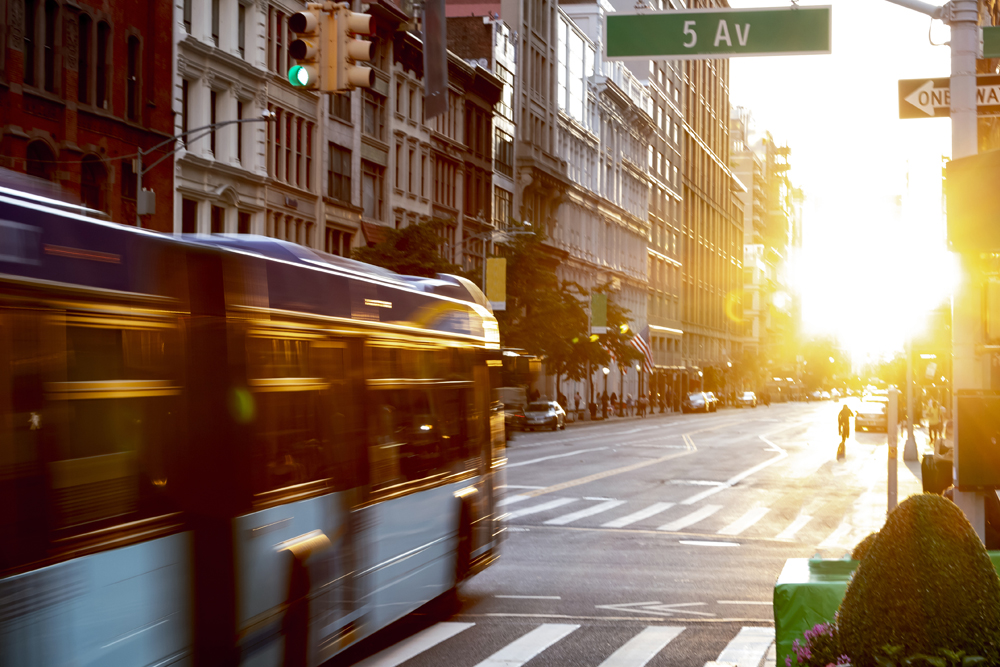
Against the backdrop of the coronavirus pandemic, towns and cities across the globe are facing a series of major challenges, including how to manage their transport networks. Data shows that during times of lockdown and travel restrictions, the impact on traffic congestion - and therefore air quality and road safety - was significant.
In the UK, government guidance in March 2020 to stop all non-essential journeys led to a dramatic reduction in the number of vehicles on the country’s roads, with air quality levels in towns and cities improving almost immediately. In the first six weeks in London, levels of PM2.5 fell by around 35% and similar, significant falls were recorded across the UK.
In the US, atmospheric levels of nitrogen dioxide air pollution in the North-east declined by 30% in March 2020 compared with the same period in 2019, while levels of nitrogen dioxide declined over major cities including Los Angeles, Atlanta, New York and Chicago.
As lockdown restrictions relaxed, it became evident that the improvements were only temporary and traffic levels rose again. In some cities, numbers rose to pre-lockdown levels, with issues of congestion, network capacity, safety and air quality quickly resurfacing.
Significant impact
Whilst clearly unwanted, the pandemic has nevertheless illustrated that interventions, however undesirable, can have a rapid and significant impact on air quality levels.
According to the World Health Organisation around 90% of the world’s population breathes polluted air, with over 30% of deaths from strokes, lung cancer and chronic respiratory disease caused by air pollution. Whilst transport operators search for ways to address these issues, it is clear there is no ‘silver bullet’. Each location will require a slightly different solution depending on authorities’ particular objectives and requirements.
For example, although clean air zones (CAZ) are becoming increasingly prevalent globally, the way each one is configured is specific to local requirements. Many authorities already have fixed assets, with roadside cameras and other infrastructure installed, so for them the questions are: can existing infrastructure be deployed in a slightly different way, or extended to achieve broader objectives? And can any of the data already being harvested be used more effectively?
Authorities around the world are wrestling with these issues and even relatively small systems, such as those enforcing yellow box junctions, will deliver considerable secondary benefits. The primary task for these more tactical, local enforcement schemes is to reduce congestion at a particular intersection - but by doing this they will also improve traffic flow in surrounding areas and reduce congestion and improve air quality and road safety. So, by effectively addressing the primary need and taking a more holistic view of the problem, it is very likely that broader benefits can be achieved.
Incremental benefits
Large-scale CAZ projects can be seen as a panacea, but it may be possible to achieve the same results with smaller schemes, each achieving incremental benefits which combine to drive air quality improvements. These would also be effective both in the short and longer term.
Enforcement schemes can also deliver results by freeing up valuable resource and generating efficiency savings. In the US, our team is currently delivering a bus lane enforcement solution whose primary objective is to address congestion and air quality. The team worked to develop a set of rules for an automated enforcement solution to drive behaviour change. The solution will free up police and other city staff, as well as reducing congestion and pollution, improving safety and generating revenue in a non-resource-intensive way.
In London, we have implemented our civil enforcement solutions around a number of schools to change behaviour and drive adherence to regulations. In essence these schemes could be perceived simply as smaller versions of a CAZ, using automatic number plate recognition (ANPR) technology during the morning and afternoon school runs to monitor vehicular access to restricted areas during specified hours. The system accurately identifies potential contraventions in real time.
Globally, we see a real issue with speed enforcement and have supported the design, development and installation of average speed solutions for a number of authorities. The simple objective is to change driver behaviour by robustly enforcing the speed limit. Not only do we repeatedly see a significant improvement in road safety and a reduction in congestion - but also improvements in air quality.
Reduction aspiration
A great example of this is the work we have completed for the London Safety Camera Replacement Partnership (LSCRP), which involved the design, build and maintenance of an ANPR-based system for the use in point-to-point (average speed) enforcement. The initial system deployed more than 120 cameras onto some of the busiest, and most dangerous roads in the UK, with an aspiration to reduce the number of people killed and seriously injured on London’s roads by 40%. Siemens Mobility was the turnkey provider for our ‘SafeZone’ system, which included all installation, commissioning, maintenance and calibration works, as well as a 10-year maintenance programme.
We have also delivered schemes in London for the boroughs of Hackney and Lambeth. In Hackney, the council decided to deter vehicle use around specific schools, to remove polluting vehicles and congestion with the explicit aim of making school journeys more enjoyable and healthier. We enabled this through the design, installation and maintenance of a civil enforcement solution. Because the solution is capable of being redeployed, the borough also has the option to focus it in other key areas as required.

In Lambeth our civil enforcement solution is being used to enforce moving traffic violations with respect to bus lanes, yellow box junctions and pedestrian zones. Following a recent project to deploy unattended enforcement cameras, the council has identified a significant increase in contraventions at a wide range of sites. Some of this is understood to be as a result of longer enforcement hours, some from operational efficiencies and some from the new ability to enforce more complicated regulations, such as weight restrictions. Overall, when compared to operations a year ago, the team is identifying 32% more contraventions.
Speed and efficiency
In New York City, the Automatic Bus Lane Enforcement (ABLE) system introduced by the Metropolitan Transportation Authority has now been fully operational for more than a year to capture bus lane violations. It is a mobile application, with cameras mounted directly onto the bus, rather than at the roadside. Now installed on 121 buses, ABLE is playing a key part in New York’s drive to improve bus speed and efficiency and to keep traffic moving on the city’s congested streets. This application system captures licence plate details of vehicles that obstruct bus lanes, together with advanced video capabilities that record photographs, videos and location information, with motorists who block a bus lane subject to a fine.
A number of cities in the UK are installing comprehensive CAZ solutions, with London’s Ultra Low Emissions Zone (ULEZ) the first example. Vehicles that do not meet the strict ULEZ emissions standards are required to pay a daily charge or incur a penalty, with the system enforced by a network of ANPR cameras.
After the first 10 months of operation, research from the Mayor of London’s Office showed that in January 2020 ULEZ had contributed to a 44% reduction in roadside nitrogen dioxide in the central zone. In January there were 44,100 fewer polluting vehicles being driven in the central zone every day with more than 80% of vehicles in the zone meeting the ULEZ emissions standards (up from 39% in February 2017). From October 2021, the ULEZ area will be expanded to include the whole of inner London, bounded by the city’s North and South Circular roads, with the new zone being 18 times the size.
Clearly, not every solution needs to be of this scope and scale. Smaller interventions can be equally effective at achieving local objectives. Indeed, in the last 12 months there has been a marked increase in the number of transport authorities seeking to realise the benefits that unattended systems can deliver; looking to engage with solution providers  at the early stages of scheme design and development to achieve their short-, medium- and long-term goals - ultimately to improve the quality of air and overall health and wellbeing of those who live, work and travel in their local authorities.
at the early stages of scheme design and development to achieve their short-, medium- and long-term goals - ultimately to improve the quality of air and overall health and wellbeing of those who live, work and travel in their local authorities.
ABOUT THE AUTHOR
Steve O’Sullivan is head of enforcement sales, ITS, Siemens Mobility











